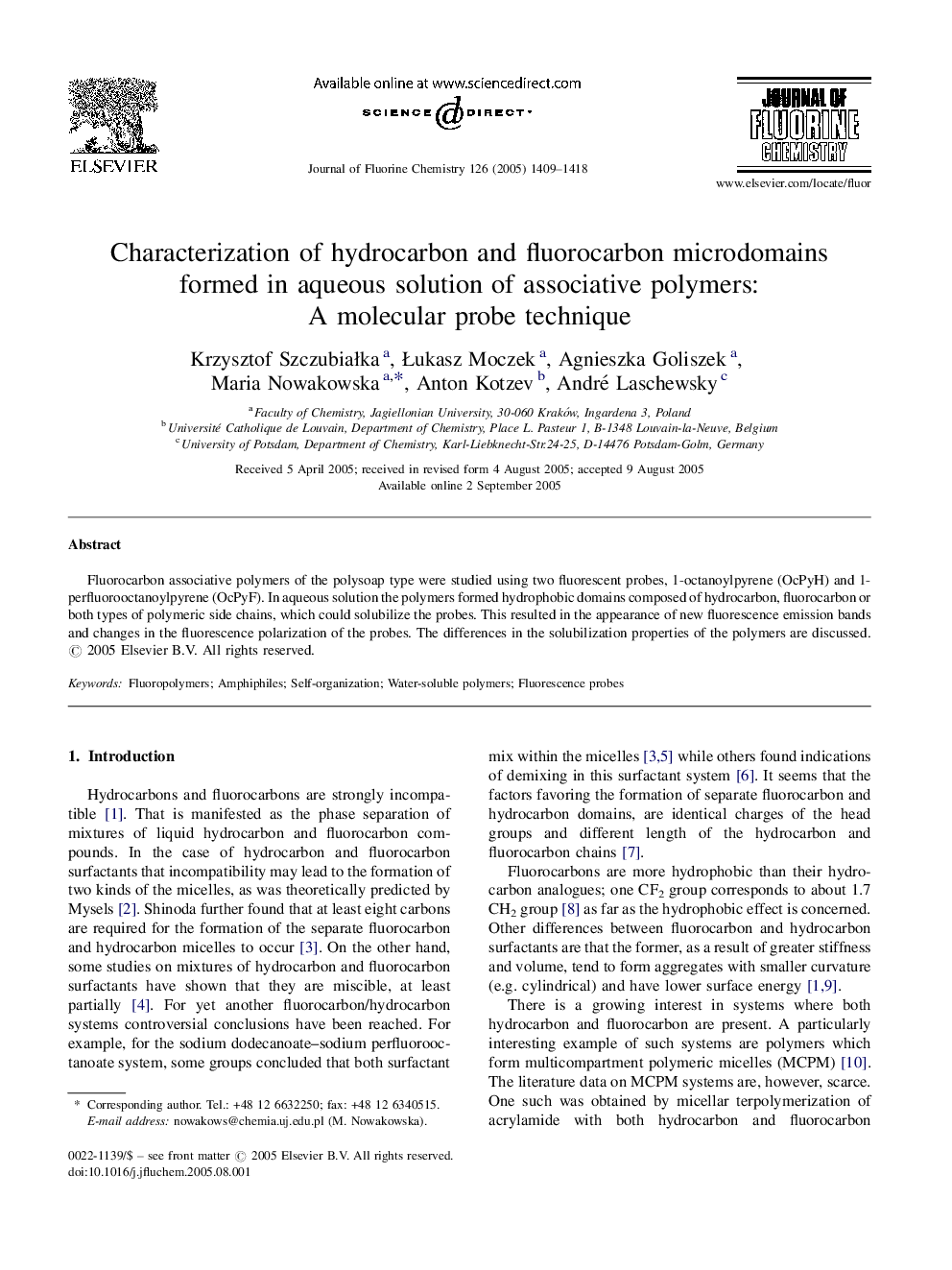| Article ID | Journal | Published Year | Pages | File Type |
|---|---|---|---|---|
| 9765844 | Journal of Fluorine Chemistry | 2005 | 10 Pages |
Abstract
Fluorocarbon associative polymers of the polysoap type were studied using two fluorescent probes, 1-octanoylpyrene (OcPyH) and 1-perfluorooctanoylpyrene (OcPyF). In aqueous solution the polymers formed hydrophobic domains composed of hydrocarbon, fluorocarbon or both types of polymeric side chains, which could solubilize the probes. This resulted in the appearance of new fluorescence emission bands and changes in the fluorescence polarization of the probes. The differences in the solubilization properties of the polymers are discussed.
Related Topics
Physical Sciences and Engineering
Chemistry
Inorganic Chemistry
Authors
Krzysztof SzczubiaÅka, Åukasz Moczek, Agnieszka Goliszek, Maria Nowakowska, Anton Kotzev, André Laschewsky,
